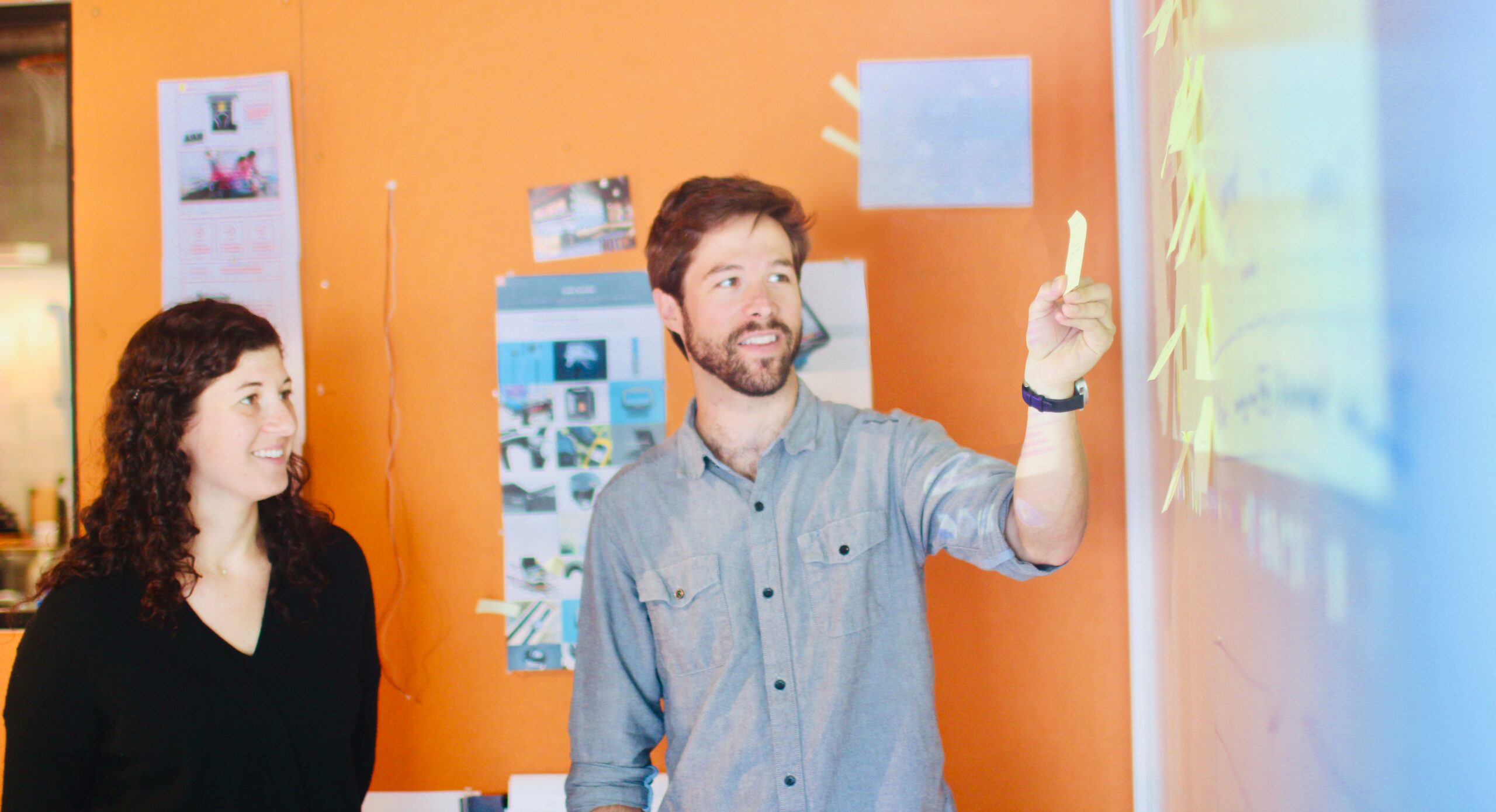Sticky notes, markers, crayons, and seemingly random office artifacts are signals that a workshop may be underway.
Meetings using the Design Thinking method are dynamic and interactive sessions that engage participants in a process of creative thinking and collaborative creation. In this article, we will explore how a Design Thinking workshop typically unfolds and what stages make up this inspiring journey towards problem-solving and innovation generation.
1. Defining the workshop’s goal
The first key stage of a Design Thinking workshop (after the formal greeting and optional warm-up) is the precise definition of the session’s objectives. The facilitator, the person leading the workshop, works together with the participants to determine what problem they want to solve and what goals they want to achieve during the session. Defining objectives helps clarify the scope of work and plan appropriate actions.
2. Empathize
Empathy is the foundation of Design Thinking. During this stage, participants use various tools such as interviews, observations, or empathy mapping to better understand the needs, expectations, and challenges of their users or customers. This allows for identifying key concerns and perspectives.
3. Define
In the problem definition stage, participants analyze the information gathered earlier and formulate the problem. Together, they develop a deeper understanding of the issue, identifying challenges and questions that serve as a starting point for the creative process.
4. Ideate
This is the stage where participants begin generating ideas of potential solutions. Various creative thinking techniques, such as brainstorming or mind mapping, are used during the session. Participants have the opportunity to express their ideas and collectively develop different concepts.
5. Prototype
Prototyping is a key element of Design Thinking. Workshop participants move from abstract ideas to concrete solutions in the form of prototypes. These could be models, mockups, or even complex designs. The previously mentioned artifacts, or even LEGO® bricks, may come into play here.
6. Test
After creating prototypes, the next step is to test them with users or clients. This phase allows for feedback and verification of whether the solutions meet the users’ needs. Based on this feedback, prototypes are improved, and the final solutions are implemented in practice.
7. Summary
The Design Thinking workshop ends with a summary, during which participants and the facilitator jointly analyze the session’s progress and the outcomes achieved during the workshop. Conclusions and lessons can be useful in future projects and activities of the company, team, or other circumstances.
Do Design Thinking workshops have a set duration?
No, a workshop can last several hours or be spread over time – even across multiple days or sessions. The duration should be adjusted to the needs of the project, team, or company to comfortably complete each phase from the agenda.
Can any points in the workshop agenda be skipped?
Steps 2-5 are essential for carrying out the full Design Thinking process. Steps 1 and 7 may be negotiable, but there are situations where they shouldn’t be skipped.
Can additional phases be added to the workshop?
It’s worth including breaks in the workshop agenda. Sometimes it’s worth adding some time for additional research and consultations with experts. Design Thinking workshops are characterized by a certain flexibility, and much depends on the person facilitating the session and the needs of the participants.


